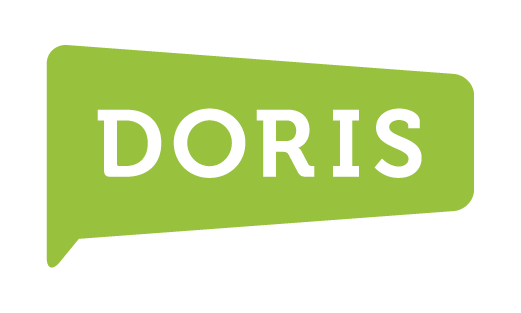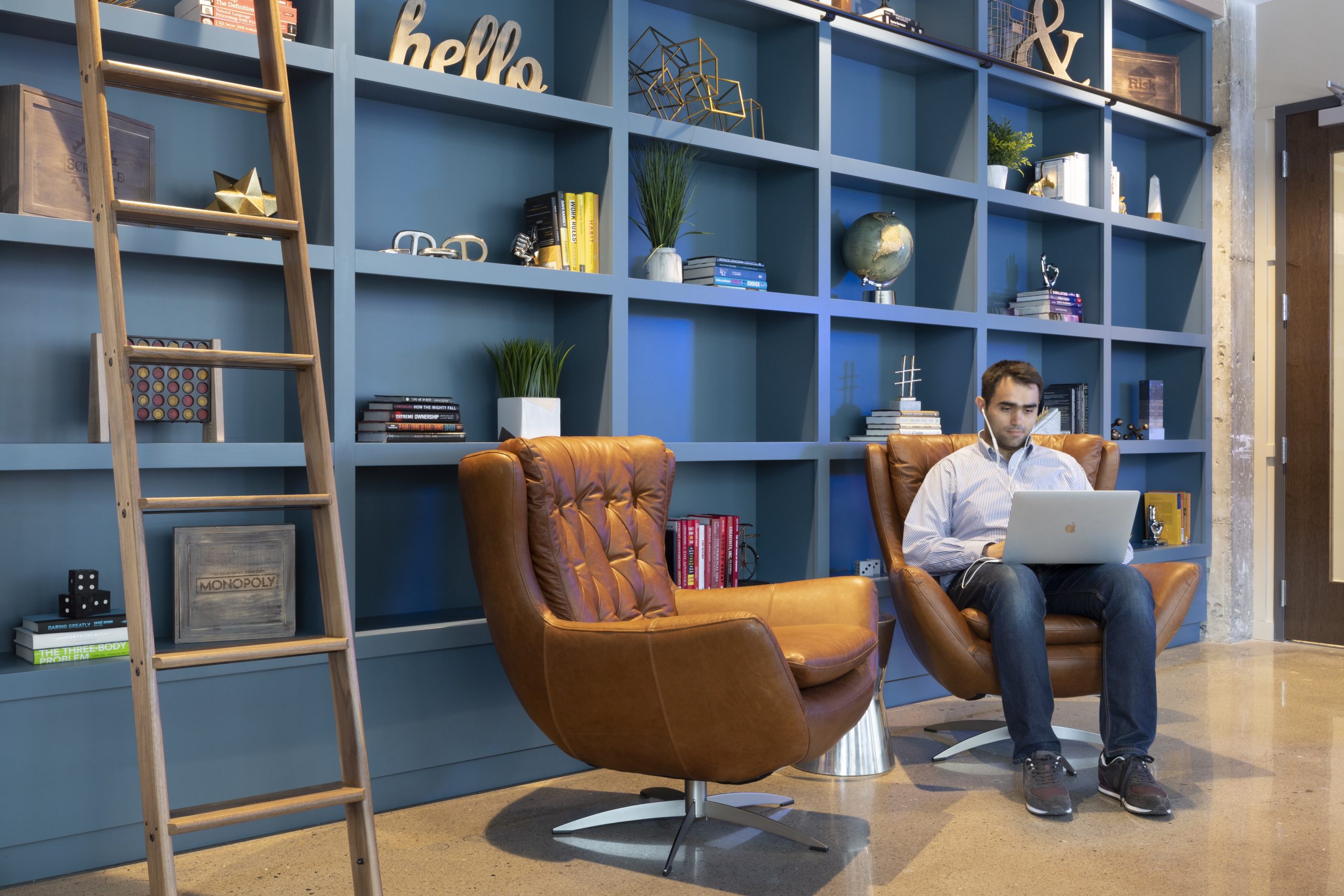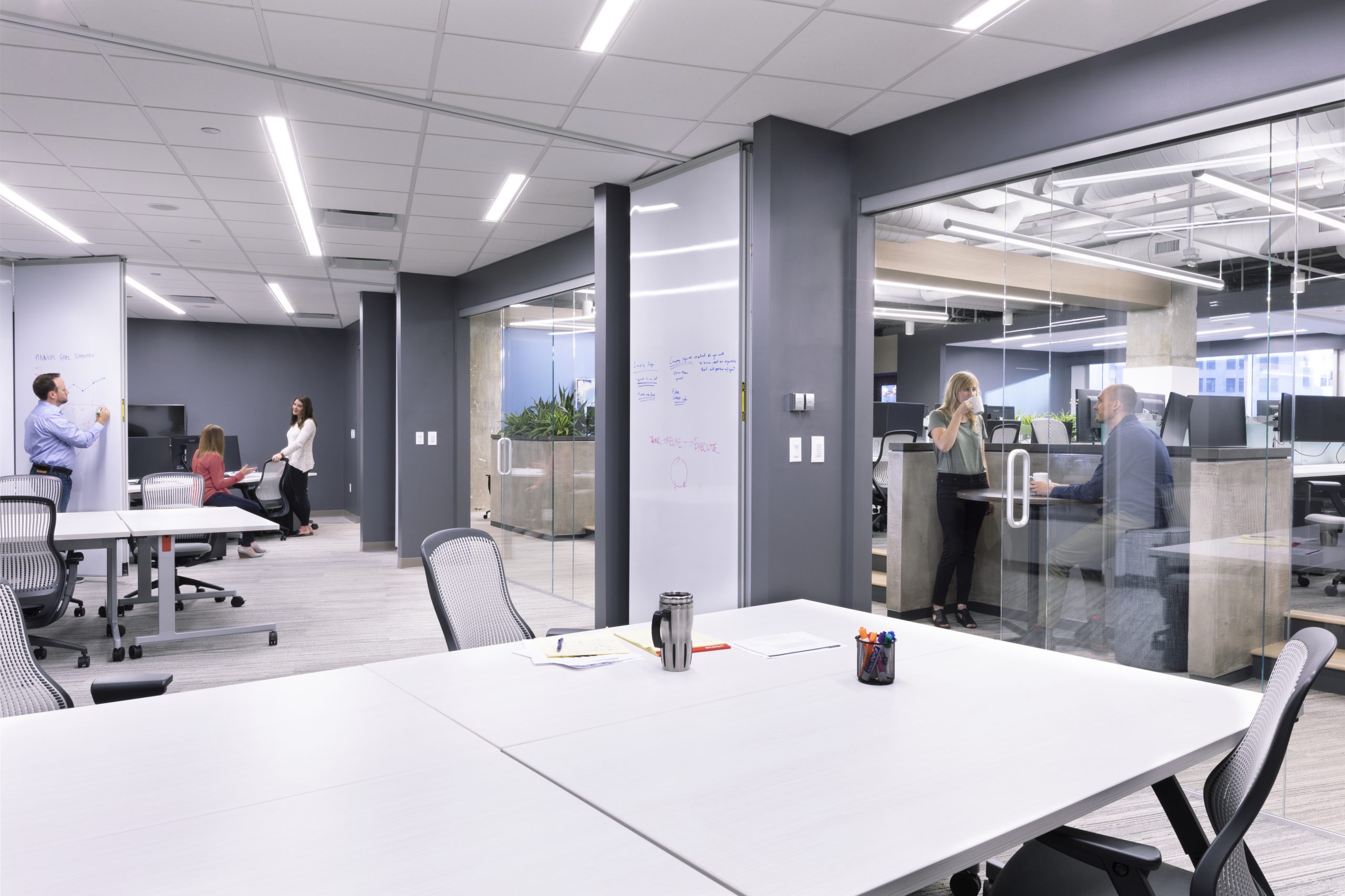Who is KSMC/Resultant?
KSMC is a growing technology, data, and management consulting firm with locations in Indiana, Ohio, Michigan, and Colorado. Whether it’s crafting innovative data solutions, implementing technology to modernize processes, turning information into actionable knowledge, or streamlining IT tools and processes, they are known for finding smart solutions to complex problems.
Why did KSMC/Resultant Engage DORIS?
In 2016, KSMC had an increasing contingent of employees who were working with the public sector in downtown Indianapolis; to better understand where and how they were working, KSMC contacted DORIS to conduct a research project. The project went so well, they engaged DORIS in the etiquette development and communications for their new KSMC111 space in downtown Indianapolis.
In 2019, again, they engaged DORIS for a research project. This time, they wanted to understand how team members used both their downtown KSMC111 and the Northside locations to identify areas that were working well, as well as areas for potential improvement. Some of their questions were:
How are KSMC’s two Indianapolis locations working relating to aesthetics, utility, capacity, and behaviors?
How does the workplace affect productivity as it relates to focus work?
How are meeting rooms used based on capacity, occupancy, and physical/remote meeting attendees?
How does assigned versus nomad seating perform camparatively?
Methods of Engagement
Employees Engaged
Building Locations
Hours of Usability Study
One-On-One Interviews
Combined Ideation & Prototyping Sessions
KSMC/Resultant’s Challenges & Solutions
During KSMC/Resultant’s Research project, DORIS identified and solved for 12 workplace challenges that they faced in 2019. Here are 3 of their top challenges and their corresponding solutions. If these challenges sound familiar to you and your organization, drop us a line.
Individual Workstations
CHALLENGE:
Nomad seating is appreciated by employees for creating more collaborative and flexible environments. However, some employees feel uncertain about how to navigate nomad seating. This could be because people still habitually sit in the same place most of the time, some employees are claiming spaces that are supposed to be shared, and employees feel disarmed by the lack of explicit ownership. It is a particular challenge at KSMC111 because there are assigned spots for some, but not all. This creates uncertainty and adds to the perception of crowding (even if there’s technically room for everyone). It’s also difficult to find people when you need to talk to them because they’re not in the same spot.
SOLUTION:
During Idea Generating & Prototyping, employees created a kiosk reservation system for nomad seating. The kiosks would show a map of available nomad seats; an employee would use their key fob to check-in and reserve a seat for a certain amount of time per day. This not only allows employees to claim a desk for the time they need, but also allows their coworkers to see if they are in the office and where they are located. People also thought that each nomad desk should have a light or display to indicate the reservation, duration, and occupant’s name. This would be both for the comfort of the person using it and wayfinding. The kiosk system is ultimately intended to resolve feelings of uncertainty around nomad seating.
The Hybrid Work Environment
CHALLENGE:
Remote work is an integral part of the way employees at KSMC work. However, they recognize the need for seamless technology to support virtual collaboration with clients and colleagues alike. Technology to support virtual collaboration was lacking in both buildings, especially in meeting spaces. Some employees felt they could not work remotely because their job required them to be face-to-face with colleagues and clients.
SOLUTION:
Employees not only wanted to work remotely more often, but envisioned themselves working remotely from places other than their home. By using predetermined and existing spaces like coworking areas, libraries, or coffee shops as informal remote hubs for employees, the KSMC team would gain flexibility and convenience without sacrificing face-to-face collaboration completely. KSMC’ers prototyped a directory of spaces to plan how they would be used based on group size, productivity goals, or desired work environment—these spaces would provide a variety of workspace types so everyone could choose their preferred works environment.
Space Utilization & Purpose
CHALLENGE:
Employees at both the Northside and KSMC111 feel crowded. However, according to the DORIS database, only the Northside is considered crowded from an occupancy perspective. The Northside location had an average occupancy that was 13% higher than KSMC111 and more spaces were occupied there as well. One reason that KSMC111 might have felt crowded was because people were looking for spaces specific to each activity they needed to do. Enclosed support spaces were highly used and most often not available. Although there might have been nomad workstations available, not having a clear direction about where to go when the space people wanted wasn’t available led to a feeling of discomfort and lack of coordination.
SOLUTION:
Employees prototyped a way to create and communicate consistent behavioral expectations and guidelines for people in the office. It’s important to note that behavioral expectations go hand-in-hand with other solutions KSMC had. When designating and clearly defining different types of spaces, in addition to behavioral guidelines, employees need to know the intended use for a space in order to act appropriately there. Employees felt frustrated by unintentional multipurpose space. Employees prototyped this by giving spaces an explicit purpose using boundaries or physical barriers to separate them.
Next Steps
In 2021, KSMC/Resultant partnered with DORIS once again to study how employees were working in a remote environment during the COVID-19 pandemic. One of the solutions from their 2019 project revolved around having better tools for remote communication and collaboration.
They wanted to check in again to see how KSMC’ers were faring since they had been working remotely for over a year. They wanted to determine how people were collaborating, what would optimize this, and how interested employees were in returning to the office in-person.
“DORIS helped us understand what collaboration looked like internally at a time when we really needed that in order to mature our organization in ways that worked for us. They facilitated a process that helped us involve all of our employees in the process, give them a voice, and integrate changes into our plan to get things implemented.” – KSMC Liaison




